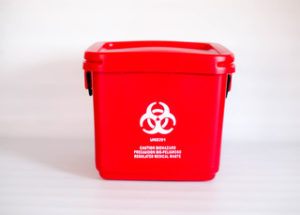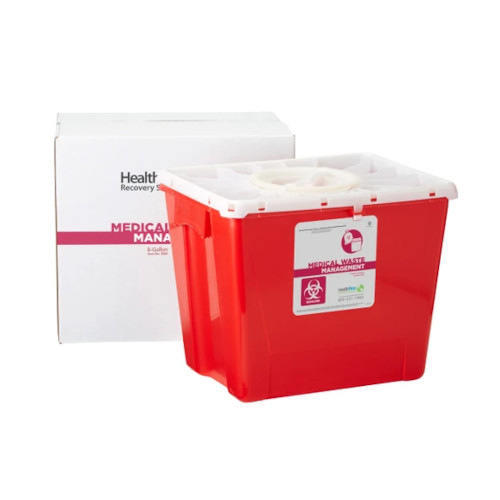Streamlined Solutions: Simplifying Healthcare Methods with Specialist Medical Waste Disposal
Streamlined Solutions: Simplifying Healthcare Methods with Specialist Medical Waste Disposal
Blog Article
Comprehending the Various Sorts Of Waste Disposal Techniques
In the realm of waste administration, the variety of disposal strategies readily available today is huge and varied, each technique offering a distinctive objective in addressing the obstacle of waste disposal. click here. From reusing methods that aim to provide brand-new life to products, to the detailed processes of harmful waste monitoring, the landscape of waste disposal is complex yet important for ecological sustainability. Recognizing the subtleties of these various techniques not just sheds light on the importance of responsible waste management however additionally motivates us to reassess our approach in the direction of garbage disposal in a swiftly evolving globe

Recycling Methods
Reusing techniques are crucial for lasting waste administration practices in both commercial and property settings. medical waste disposal. By carrying out efficient recycling techniques, a substantial amount of waste can be drawn away from landfills, saving natural sources and reducing the ecological effect of manufacturing procedures
In houses, curbside recycling programs play a crucial duty in encouraging homes to different recyclable materials from general waste. Materials such as paper, plastics, glass, and metals can be arranged and collected for processing right into brand-new items, reducing the requirement for resources and energy-intensive manufacturing processes.
Industrial centers also rely upon recycling approaches to reduce waste generation and advertise a round economy. By executing closed-loop systems, organizations can reuse materials within their manufacturing procedures, reducing costs and environmental impact. medical waste removal. Furthermore, industrial recycling programs commonly entail collaborations with specialized recycling facilities to guarantee that materials are appropriately sorted, processed, and reintegrated into the supply chain
Composting Methods

Oxygenated static heap composting includes blending organic waste materials in a huge pile and frequently turning it to ensure appropriate oygenation. This method is fit for smaller-scale operations and households.
In-vessel composting includes positioning organic waste in a shut container with regulated conditions for temperature and oygenation. This technique works for handling food waste in city locations. Last but not least, windrow composting includes developing long rows of natural waste and on a regular basis turning them to promote disintegration. This technique is frequently made use of in farming settings.
Garbage Dump Disposal
Landfill disposal is a commonly made use of technique for handling waste that can not be recycled or composted. Methane gas, a result of decaying organic waste in landfills, is often accumulated and utilized as a source of eco-friendly power. Efforts to lower dependence on landfills consist of advertising waste reduction, reusing, and checking out alternative waste disposal approaches to reduce the environmental impact associated with traditional land fill disposal practices.

Waste-to-Energy Incineration
Incineration of waste for power generation is an approach increasingly being thought about as a choice to traditional garbage dump disposal methods. Waste-to-energy incineration entails the combustion of waste materials at heats, commonly in specialized centers designed to produce electrical energy or warmth via the process - click here. This technique not only minimizes the quantity of waste that would otherwise be destined for garbage dumps yet also utilizes the warm generated during incineration to develop energy
One of the crucial benefits of waste-to-energy incineration is its capability to produce electricity while lessening the ecological influence contrasted to traditional garbage dump disposal approaches. By converting waste into energy, this technique aids in lowering greenhouse gas emissions and reliance on nonrenewable fuel sources for energy generation. Additionally, waste-to-energy facilities are geared up with advanced air pollution control technologies to reduce prospective environmental contaminants released during the combustion procedure.
Contaminated Materials Monitoring

Taking into consideration the critical relevance of liable waste administration practices, particularly in the world of ecological sustainability, the focus currently moves towards the intricate domain name of Hazardous Waste Management. Unsafe waste postures considerable risks to both human wellness and the atmosphere, necessitating customized handling and disposal methods. Common instances of contaminated materials consist of chemicals, batteries, pesticides, and digital waste.
Harmful Waste Management entails the identification, collection, transport, treatment, and disposal of products considered hazardous or possibly harmful. This process calls for adherence to stringent laws and guidelines to minimize unfavorable effect on resource environments and public health. Different approaches are utilized in taking care of dangerous waste, consisting of recycling, secure garbage dumps, encapsulation, and chemical therapy.
Proper Contaminated Materials Monitoring is vital for protecting against contamination of soil, water resources, and air pollution. It is necessary for sectors, laboratories, health care centers, and various other generators of hazardous waste to carry out robust administration approaches, training programs, and emergency situation feedback plans to make sure the secure handling and disposal of these products. Failure to manage contaminated materials properly can have far-ranging effects, underscoring the significance of thorough and liable practices in this area.
Conclusion
Finally, waste disposal methods play a critical duty in handling and minimizing the influence of waste on the setting. From reusing and composting to land fill disposal and waste-to-energy incineration, each method has its very own advantages and constraints. Correct monitoring of hazardous waste is also vital to protect public health and the setting. It is essential for industries and people to recognize the various garbage disposal strategies offered and select the most appropriate method for lasting waste monitoring.
In the world of waste management, the selection of disposal methods available today is substantial and differed, each method offering an unique purpose in resolving the difficulty of waste disposal. click here. From recycling methods that intend to provide new life to products, to the complex processes of unsafe waste administration, the landscape of waste disposal is complex yet essential for ecological sustainability. Comprehending the nuances of these various techniques not just drops light on the relevance of responsible waste monitoring however likewise prompts us to reassess our method in the direction of waste disposal in a quickly evolving globe
Efforts to minimize reliance on garbage dumps include promoting waste decrease, recycling, and discovering alternative waste disposal approaches to reduce the ecological impact connected with typical garbage dump disposal techniques.
It is essential for markets and people to understand the various waste disposal techniques offered and pick the most suitable technique for lasting waste management.
Report this page